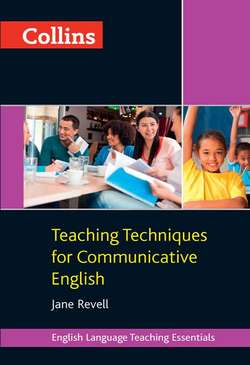Читать книгу Collins Teaching Techniques for Communicative English - Jane Revell - Страница 8
Chapter 1 Communication 1.1 Surprises
ОглавлениеCommunication is an exchange, between people, of knowledge, of information, of ideas, of opinions, of feelings. It takes place in a multitude of ways, from the writings of the weightiest tome to the merest flicker of an eyelid.
For genuine communication to take place, what is being communicated must be something new to the recipient, something that person does not know in advance. Com-munication is full of surprises.
It is this element of unexpectedness and unpredictability which makes communication what it is, and for which it is so hard to prepare the student by conventional teaching methods. It is true that there are a few fairly predictable responses: ‘Hello’ will produce one of a limited number of predictable replies, ‘Hello’, ‘Hi’, ‘Good morning’, etc. But these exchanges take place in a very small number of special situations – they are often social formulae, which serve to establish or maintain relations between the speakers rather than convey any earth-shattering information.
It is also true that we can often predict the semantic area of a response and even guess at key words which will come up. If, after a visit to the zoo, someone asks, ‘Did you see the reptiles?’, the response is likely to be in the general area of ‘zoo-going’ and animals, and words such as ‘snake’, ‘lizard’ and ‘crocodile’ might well occur.
In a lot of cases, however, responses are completely unpredictable. The question ‘Did you see the reptiles?’ could produce any of the following replies: ‘You bet we did. At £16.80 to go in, we made sure we got our money’s worth!’; ‘That reminds me, did you ring Aunt Nelly?’; ‘Oh, have you heard about John going to Kenya?’ etc. This sort of interaction is very often ignored in language teaching.
In the early days of TEFL, the emphasis was on the formation of language habits rather than on the development of communicative skills. Stimulus / response drills and the like encouraged learners to think that any given utterance has a set reply.
Although this type of classroom exercise is still valuable practice in formulating communications and ‘getting the tongue round’ stretches of language, it is a means to an end rather than an end in itself, and the transfer to real life is not automatic: an intermediate stage is called for. The sort of activities described in subsequent chapters of the book (see particularly Chapter 4), are designed to help bridge this gap.
